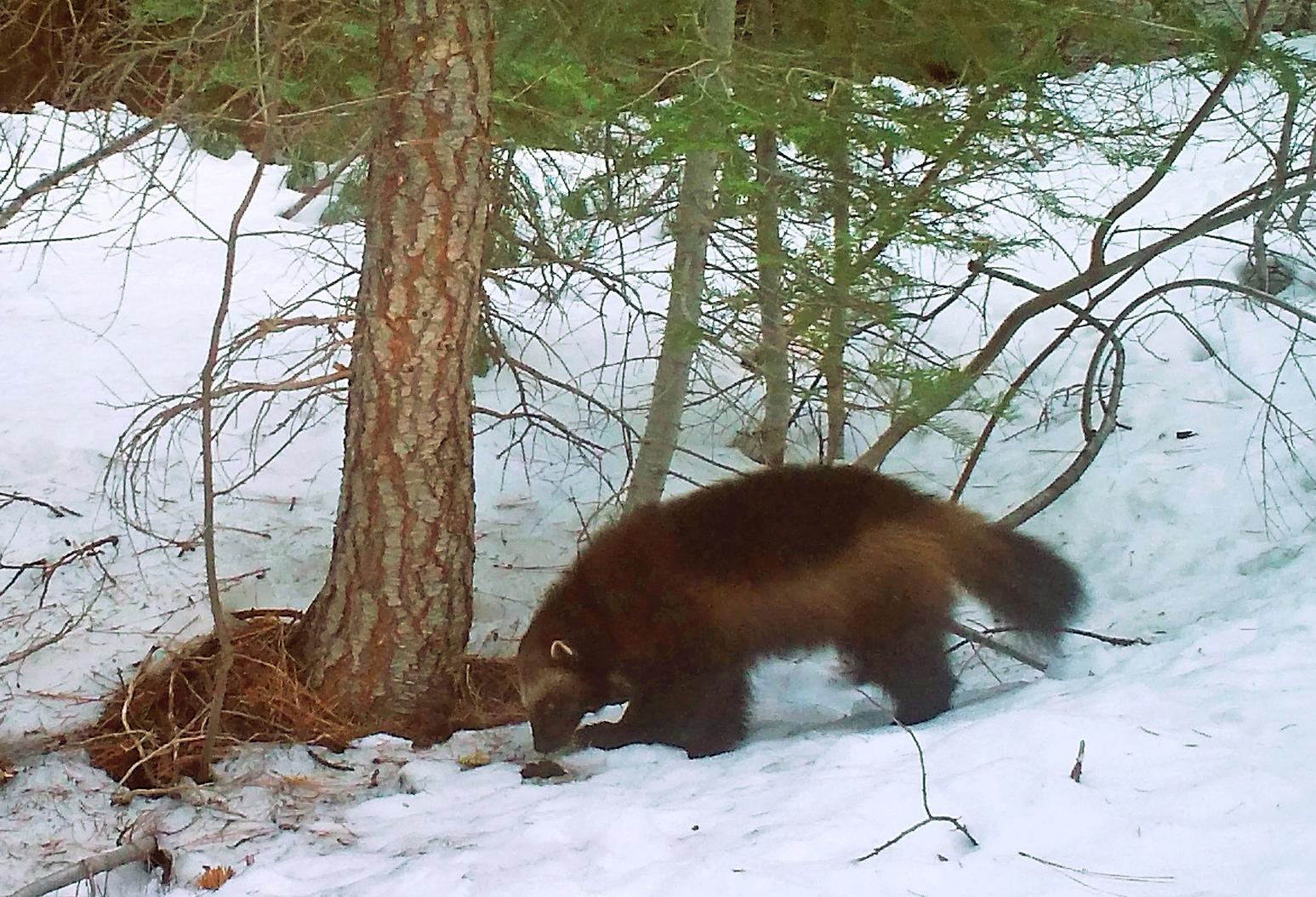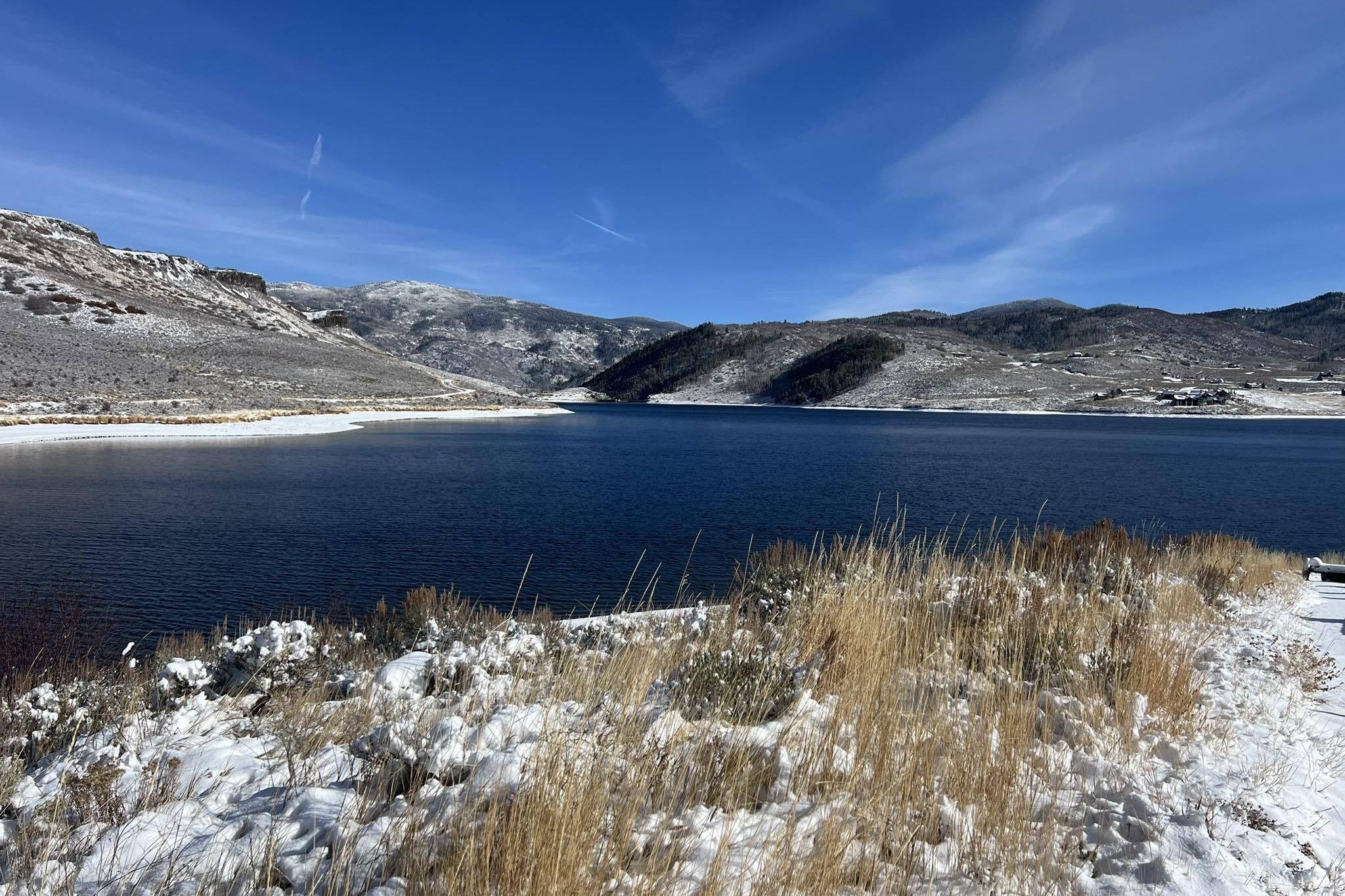
Colorado’s wildlife specialists are nearly finished with updates to a plan that could return a carnivorous mammal to the Centennial State.
Aside from the first five letters of their name, wolverines have little in common with wolves, the species that draws the majority of headlines for wildlife management. One thing they do have in common is that they were once prolific in the West.
“Wolverine was largely extirpated from the Western United States by about the 1930s,” Jeff Copeland, director at the Wolverine Foundation in Idaho said. “We don't know, necessarily, exactly why. It probably had to do with at the turn of the century there was heavy livestock grazing in the Western United States — heavy enough that it tended to displace other large ungulates — deer, elk, moose, sheep — animals that are very important to the wolverines, particularly as winter diet. Plus, there was widespread, wholesale poisoning campaigns going to keep predators away from livestock.”
In recent years, Colorado chose to revisit a plan from 2010 that outlines how North American wolverines could be reintroduced to the state, similar to an earlier effort that brought lynx back. But while Colorado Parks and Wildlife (CPW) eyes a path forward, some, including Copeland, wonder if the best strategy for species rebound is patience.
“Overall, it's like, why do it? Because they're going to be there anyway. And we're in the midst of watching this animal reoccupy its historical habitat,” he said.”Why not let it do it on its own? I know that people want it now, and it may not occur naturally in my lifetime or yours, but it will eventually. They'll make it. Particularly to Colorado.”
One big weasel
Wolverines are actually a part of the weasel family. In fact, they’re the largest terrestrial member of the weasel family. The sea otter is the largest member of the weasel family overall.
Jake Ivan is a wildlife research scientist with Colorado Parks and Wildlife. He worked on updating the reintroduction plan and said wolverines are elusive creatures that would favor high-alpine, remote areas of Colorado.
“It lives at very low densities. Even in places where wolverines are doing well, they're fairly rare. They have huge home ranges and they generally just patrol those home ranges looking for carcasses, things that have died for other reasons and they sort of scavenge on those and live this kind of lonely existence up in the high country all throughout North America,” he said. “And then importantly for our considerations, its historical range did extend down the Rocky Mountains and the Cascades as well.”
Wolverines are so prone to wandering that the last one to be confirmed in Colorado traveled all the way down from the Grand Tetons, Copeland said. It later ventured to North Dakota, where it was shot.
Their extensive home ranges and low populations make them incredibly difficult to find, Copeland added.
“When I was working at Glacier National Park, there was an estimate put out of the number of grizzly bears in Glacier Park, and that came out to be, like, 200-250 bears. We believe that Glacier Park is home to probably the highest density of wolverines, at least in the contiguous United States that I'm aware of, and we estimated that there's about 40,” he said. “So five times less animals in the best habitat in the country.
Copeland said the animals themselves are not that large, maxing out at around 30 to 40 pounds. He also said they’re curious animals, but have a thin history of engaging with livestock — a concern of late in Colorado given the discussions around wolves.
“You can most likely have a population of wolverines living right next to you without even knowing it,” Copeland said. “I mean, at some point they're going to come down and maybe make their presence known. But unlike the wolf and the bear, the wolverine doesn't tend to mess with our stuff. It's not going to come get in your garbage can. It's not going to kill your livestock.”
There are a couple of instances of the animals killing sheep, Copeland said, but they’re rare enough that biologists can name the specific cases.
Why Colorado?
There is support for the plan from some leaders in Colorado. Gov. Jared Polis included it in his 2024-2025 budget letter, which serves as a request to the legislature and outlines priorities for the coming year. The request noted funding for biodiversity saying, “This budget expands Colorado Parks and Wildlife’s capacity to protect biodiversity across all species and achieve successful reintegration of wolverines into our high mountain ecosystems.”
Ivan said Colorado could play an important role in helping the species recover in the contiguous United States.
“We've gone through the exercise of modeling and mapping wolverine habitat in Colorado, and there's a fair amount of it —over 30,000 square kilometers, which makes us actually the largest unoccupied block of habitat left in the Lower 48,” Ivan said. “About a fifth of all the habitat in the Lower 48 occurs in Colorado.”
On top of that, the idea of bringing the species to Colorado dates back decades, even before the 2010 proposal.
“Starting in 1997-1998, our agency had decided based on our mission as a wildlife agency that we wanted to restore both Canada lynx and wolverines to Colorado,” Ivan said.
CPW went with Lynx first, which Ivan said has been successful and could demonstrate a viable path for wolverines.
“There are some similarities between lynx and wolverines. They're sort of rare, solitary, forest-carnivore-kinds-of species, so that does give us a bit of confidence,” Ivan said. “But, they are different species. There's some important differences and wolverines present their own challenges for sure.”
The Challenge
Among those challenges, Copeland said, is that wolverines are already rare and any effort to relocate them will ultimately lead to some incidental killing of the species.
“There's many characteristics of the wolverine that’s going to make it really difficult to reintroduce this animal. The primary one is the fact that the females are pregnant most of the winter, and you're going to have to try to deal with that. Secondly, they're very rare. Wherever you go to get your animals is going to be, it's going to have a detrimental effect on the population that they come out of,” he said.
Additionally, wolverines in the contiguous United States were listed as a threatened species in November 2023, which limits where source animals for a new population could come from. Ivan said concern over relocating animals is not without merit.
“We're wildlife people. We certainly don't want to do any harm to individual (wolverine) if we can help it. And we certainly don't want to do any harm to any of the source populations either,” he said. “We certainly think it's doable, but we need to be careful on all those fronts. And we have a lot of details in our current plan that we think are important.”
As for where wolverines could come from, Ivan said there’s no set location yet. CPW staff is listing out the types of regions that would best adapt to moving to Colorado — higher alpine, perhaps with a taste for marmots.
“There will be a lot of logistical concerns in terms of finding willing partners in Canada or Alaska to help us, trying to figure out which of those populations might be able to sustain offtake, etc. so those are kind of the two top-line things that come to mind immediately,” he said.
Copeland said he has no doubt CPW is qualified for species relocation — he was involved in some of the discussions about lynx and wolverines — but he thinks it’s possible that wolverines are already on their way to recovering and people just need to be patient. A mix of habitat improvements and policies against trapping has already helped the species rebound. A few more tweaks, he said, and the animals may get back to Colorado on their own.
“If wolverines are going to make it down here, what's the likely route that they're going to take? Probably off the end of Southeast Idaho, drop down into the Wasatch (range) and Uintas, and then jump across through Dinosaur into maybe the Flat Top (Wilderness Area),” he said. “So what are potentially some of the barriers along that route that we could look at and address? What is the best thing that we can do to encourage these animals to make it down here?”









